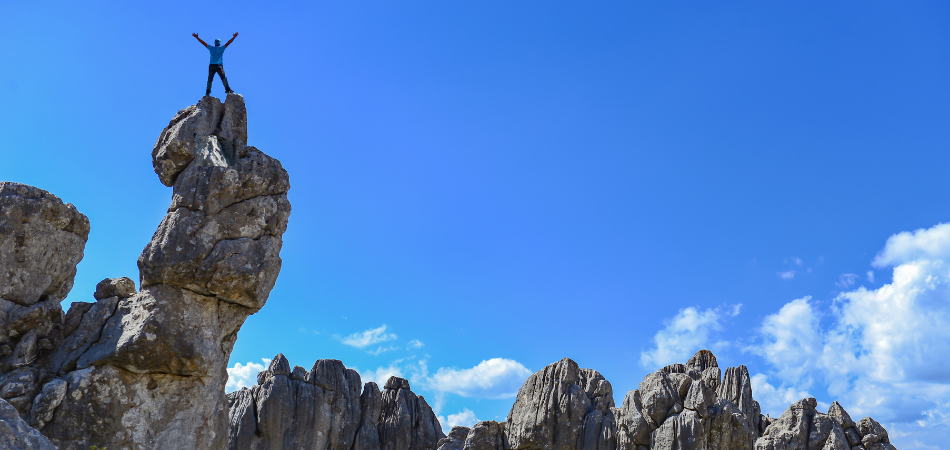All sports have risks, but some sports have more than others. Rock climbing is considered an extreme sport because of the number of dangers that are involved. Climbers must be physically and mentally prepared to handle themselves in any situation.
It’s normal for new climbers and those interested in the sport to ask about the dangers of rock climbing. It’s important to remember that individuals who are careful and follow all safety protocols will minimize their risk while climbing indoors or outside.
Long Term Joint Damage
One of the most common dangers of rock climbing comes from the long term damage to joints. Rock climbing is not kind to the body. It can cause joints, tendons, and muscles to be overworked and overstressed. In fact, it’s more common to find a rock climber who has or had tendonitis than it is to find one who hasn’t.

By consistently pushing the boundaries of what your body can handle each time you are on the wall, you will inevitably cause long term damage. Most climbers simply work through the discomfort because of how much they love the sport.
The damage can be mitigated by listening to your body on the wall. While the joint and tendon damage can be uncomfortable, it is not the end all be all. Sometimes, a week or longer break is all your body needs to avoid serious damage.
Serious Injuries To The Head & Body
Climbing does put every individual at serious risk for injuries to the head and body. Falling rocks can occur at any time. For those who are leading, a whipper (falling a long distance while climbing) can cause the climber to slam into the wall.
The risk of injury is why it is so important to wear a helmet while climbing. The wall and falling rocks are unforgiving. Aside from pain, head injuries can cause amnesia, broken skulls,and brain swelling.
It is also possible to be cut by rocks or experience broken bones. This is especially true if a climber falls and hits the ground. Your climbing partner must also be a good belayer to help mitigate the risk of severe injury from falling.
Should a serious injury occur, you need to have an exit plan. Your climbing partner may not be able to walk, so you need to know if you can communicate with an emergency medical team. The more remote your climb, the harder it will be to receive assistance if you need it.
While serious injuries are possible, they can often be avoided with preparation and communication. Properly placing protective gear, wearing a helmet, and speaking clearly to your climbing partner goes a long way.
Fatal Accidents Can Occur
In the worst case possible, fatal accidents can happen. The length of the fall, the ability to reach medical assistance, and the severity of the injury can all be attributed to a fatal accident.
These situations are not ideal for anyone. Everyone, including your climbing partner and bystanders, will be affected by what they saw for years to come.
The statistics for fatal rock climbing accidents are low. On average, there are only around 30 fatalities per year in North America and 150 around the globe.
Basic Climbing Safety Rules
In order to mitigate risks while climbing, you need to keep a few basic safety rules in mind. These will prevent you from becoming a statistic:

- Never climb above your skill level.
- Inspect equipment and rope before every route.
- Double check safety knots.
- Verify your belayer is using the device correctly.
- Have a safety plan in place.
- Register for backcountry permits (if available).
In addition to these basic rules, climbers should always educate themselves and attend training when it comes to advanced techniques. Sport and trad climbing require at least one person in the group to know how to clean and retrieve gear. One small mistake can have a climber falling from the top of the route.
Most climbing gyms offer an outdoor climbing class that goes over the basic skills one needs to safely climb outside. Those who do not have a nearby gym can search for local alpinist groups and receive training from them.
As a last resort, YouTube is filled with thousands of education videos from certified mountaineers who can explain these advanced skills. Some of the most reliable channels for rock climbing education include the AmericanAlpineClub and SIET, School for International Expedition Training.
While climbing may be an inherently dangerous sport, each climber is responsible for keeping themselves safe on the approach and on the wall. By doing so, everyone in the crag can have a good climbing day
